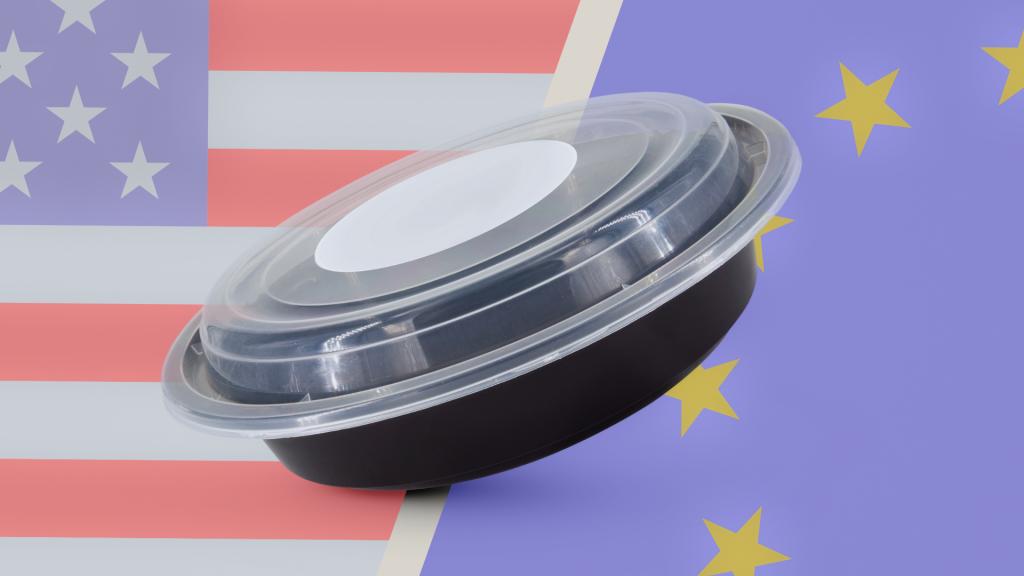In 2025, the U.S. Food and Drug Administration (FDA) is undergoing one of its most transformative regulatory shifts in decades. Prompted by public health concerns and administrative directives, changes in oversight of food contact materials (FCMs) now focus on post-market reassessment, elimination of loopholes, and alignment with best international practices. These reforms, anchored in a historic FDA reorganization and the reevaluation of the Generally Recognized as Safe (GRAS) framework, offer key comparisons with the European Union’s highly structured regulatory model.
Table of Contents
FDA’s Human Foods Program: Centralized Oversight for Food Safety
In October 2024, the FDA implemented its largest reorganization in recent history by launching the Human Foods Program (HFP). This action consolidated food safety responsibilities previously scattered across the Center for Food Safety and Applied Nutrition (CFSAN), the Office of Food Policy and Response, and parts of the Office of Regulatory Affairs.
The restructuring was driven by recommendations from the Reagan-Udall Foundation and internal audits after the 2022 infant formula crisis. It emphasizes risk-based decision-making and systematic post-market chemical assessments, similar to how the EU’s European Food Safety Authority (EFSA) manages the lifecycle of food-contact substances.
GRAS Reform: Ending Self-Affirmation and Strengthening Transparency
On March 10, 2025, HHS Secretary Robert F. Kennedy Jr. directed the FDA to explore rulemaking that would eliminate the self-affirmed GRAS pathway, a regulatory process long criticized for allowing companies to determine safety without FDA review.
This decision aligns with concerns raised by consumer safety groups and media investigations, including The Washington Post’s report that the GRAS process enabled food additives to bypass independent scrutiny. In contrast, the EU mandates EFSA safety assessments for all substances intended for food contact, offering a more centralized and publicly accountable process.
U.S. Code of Federal Regulations (21 CFR) vs. EU Compliance Standards
Food contact regulation in the U.S. is governed under Title 21 of the Code of Federal Regulations (CFR), particularly Parts 170–199, which categorize additives by function and material type:
- §177.1520: Olefin polymers (e.g., polyethylene, polypropylene)
- §177.1630: PET polymers
- §175.105 and §178.2010: Adhesives and stabilizers
Each material has unique extraction limits and permitted additive lists. Unlike the EU’s unified positive list under Regulation (EU) No. 10/2011, the U.S. system does not allow automatic cross-application of approvals between materials.
Testing Requirements: Resin Extraction vs. Simulant Migration
The FDA typically requires extraction testing on raw polymers using solvents like hexane or xylene, without evaluating the final consumer-facing material. For example, §177.1520 limits hexane extractables in polypropylene to 6.4 % by weight.
By contrast, the EU mandates overall and specific migration testing using food simulants, under actual or worst-case conditions, ensuring direct consumer safety.
State-Level Influence: California Proposition 65
California’s Proposition 65 adds another layer of regulatory complexity. It requires warning labels for any products containing substances known to cause cancer or reproductive harm, including FCM-related pigments and adhesives. While not exclusive to food, it affects many food packaging manufacturers seeking national distribution.
This state-level framework mimics the EU’s REACH legislation, where companies must track and disclose hazardous substances (SVHCs) used in their products.
Recycled Plastics: FDA’s Non-Objection Letters vs. EU Authorization
The FDA allows use of recycled plastic in food packaging if the producer receives a No Objection Letter (NOL), indicating the process poses no health risk. However, participation is voluntary (FDA Recycled Plastics Guidance).
In contrast, the EU mandates strict approval of recycled materials under Regulation (EU) 2022/1616, with comprehensive controls on traceability and decontamination.
Conclusion: Converging Goals, Diverging Methods
The U.S. regulatory approach is rapidly evolving. With the FDA’s restructuring and a push to close the GRAS loophole, 2025 marks a pivot toward transparency, accountability, and partial alignment with EU-like oversight. However, significant differences remain, particularly in testing protocols, legal frameworks, and the structure of substance authorizations.
For international companies, compliance in one region does not guarantee approval in another. Understanding both U.S. and EU regulatory landscapes is essential for navigating the complex, increasingly health-conscious world of food contact materials.










